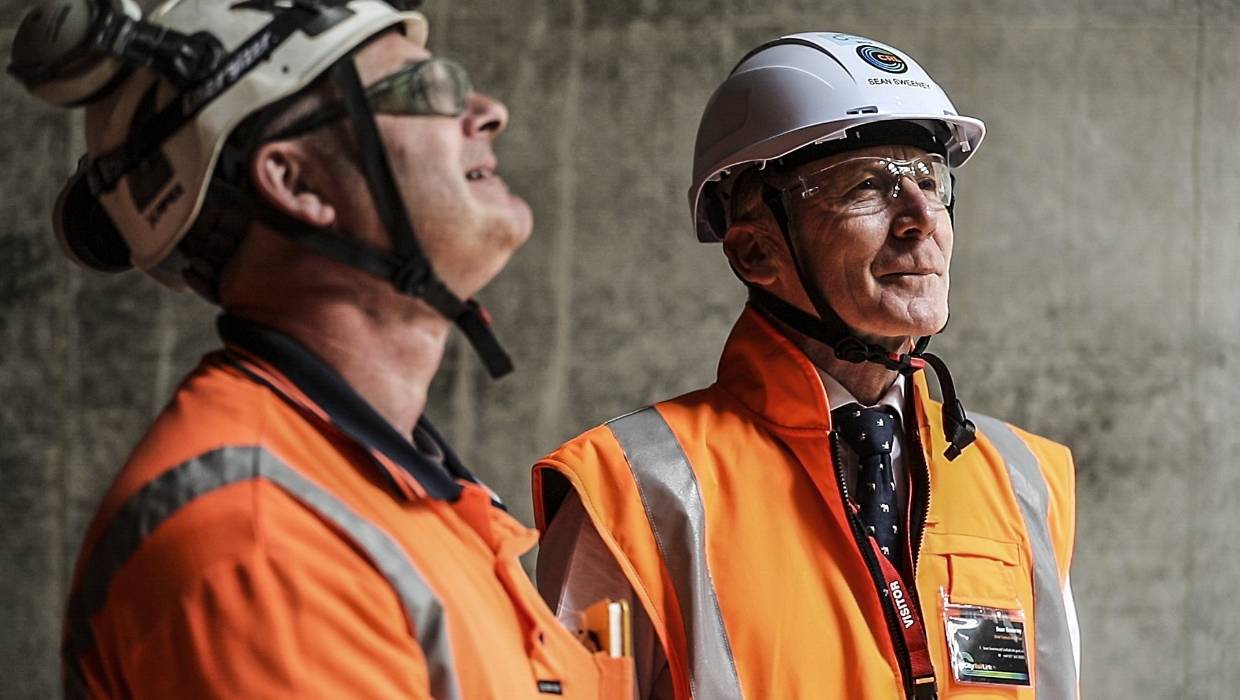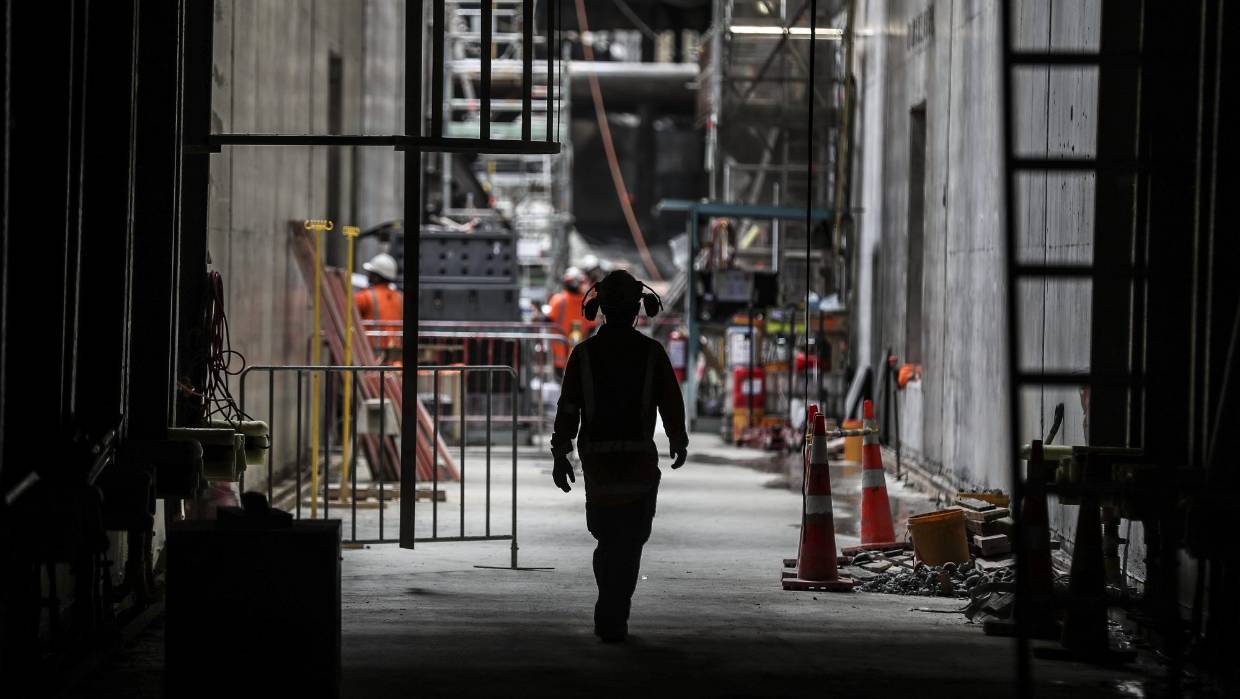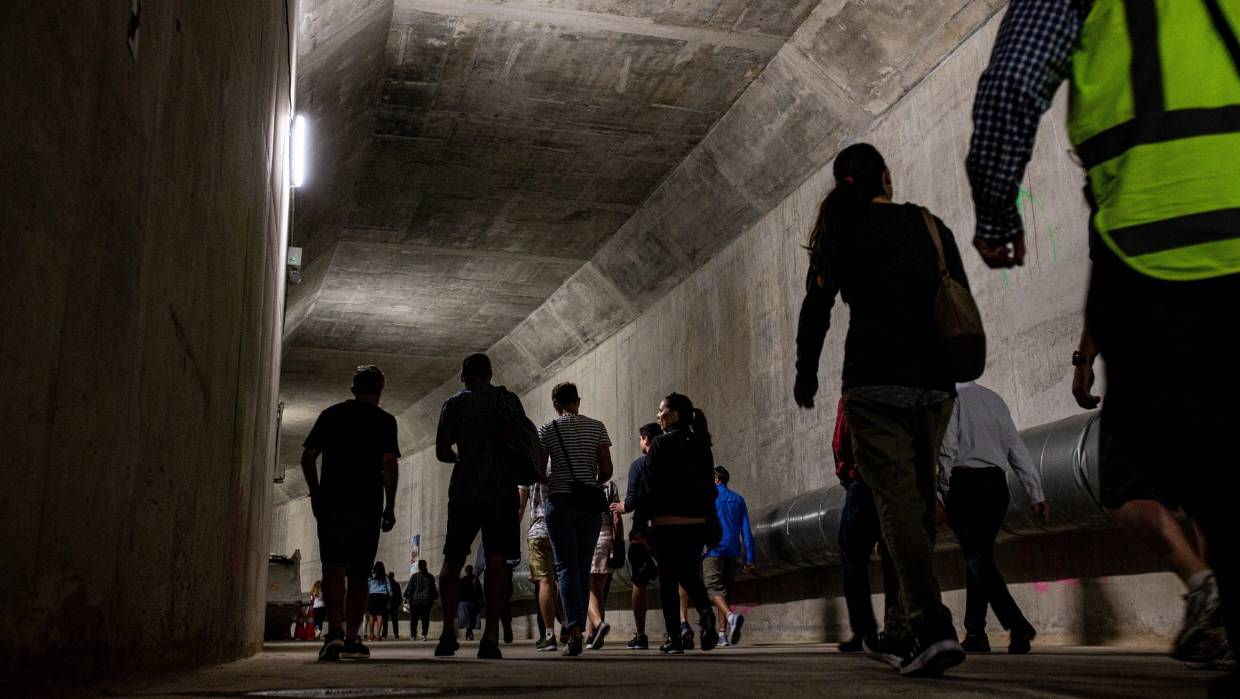NZ’s biggest infrastructure project eyes fast post-Covid-19-restart
By Todd Niall

Sean Sweeney, (right) CEO, City Rail Link Ltd
The country’s biggest infrastructure project, Auckland’s $4.4 billion City Rail Link, is preparing for a fast re-start but also needs to get back 20 of its construction staff stuck in the Philippines.
The joint Auckland Council-Government project is currently working towards an internal deadline of being able to re-start construction next week, but that is dependent on the Covid-19 alert lowering from the current Level 4.
Chief executive Dr Sean Sweeney said the company was looking at whether it could accelerate some work upon re-start to provide more early work for the sector, but also faced hurdles.

Construction work on the City Rail Link at the Customs-Albert St intersection in 2018
Twenty Filipino construction workers out of 100 employed on the twin underground rail tunnels had returned to their home country for a holiday, and had been prevented from returning by the border controls.
The Filipino workforce is a big part of the CRL project – “diligent, working hard, and they make a massive contribution”, said Sweeney.
He said once the details on the group were available from the Link Alliance which is constructing the project, help would be sought from the Government.
Further into the re-start, a group of specialist drilling machine technicians would be needed, and they were currently locked down in their home country, France.
“We have been told when the time is right we just need to put a case to Government, and they will look at how to expedite that,” he said.

Ten thousand people got tickets to walk through the City Rail Link tunnel in November 2019
Sweeney believed CRL was uniquely placed to make a big contribution to the re-start of the wider construction sector.
The company was looking at options such as working double shifts, or doubling the number of piling machines, in order to provide more work early on.
“We’ve told the sponsors (Council and Government) we are going to look at areas we could accelerate that we wouldn’t have done normally,” he told Stuff.
“If we could double-shift, say 6am to 1pm, then 1pm to 8pm, we would get roughly twice as many people employed on meaningful work.”
Sweeney said it would be months after re-starting before the company would know the impact on costs, and on the 2024 completion target.
If there were extra Covid-19-related costs, these could be met out of the existing contingency budget.
The project was still moving forward even during lockdown, with around 500 staff working on design, construction planning and consenting.
Sweeney said a lot of work was going into figuring out alternatives, in case there were difficulties with supplies from overseas.
“There is probably going to be a different construction world after all this,” he said, meaning some firms might not survive.
“We might have done pricing for a piece of specialist equipment we don’t need to buy until next year – and the supplier might go out of business between now and Christmas.”
The project was looking at making more of the tunnel linings in New Zealand, because the overseas supply chain was not so clear.
In the wider construction sector, the umbrella organisation Infrastructure New Zealand said the Government and local bodies needed to seize the crisis as an opportunity to make long discussed changes to de-risk the sector.
Reviewing the Resource Management Act, creating an insurance scheme to cover disputes such as over leaky buildings, and simplifying rules across the country in areas such as modular construction, were among ideas advanced by the chief executive Paul Blair.
“Modular construction in a post-Covid-19 setting, imagine manufacturing your house in a controlled, factory construction environment,” said Blair.
Blair said the problem at the moment was having 68 different sets of rules for it, among local bodies around the country.
“We are strongly encouraging the Government, not to waste a crisis,” he told Stuff.
Source: Stuff
